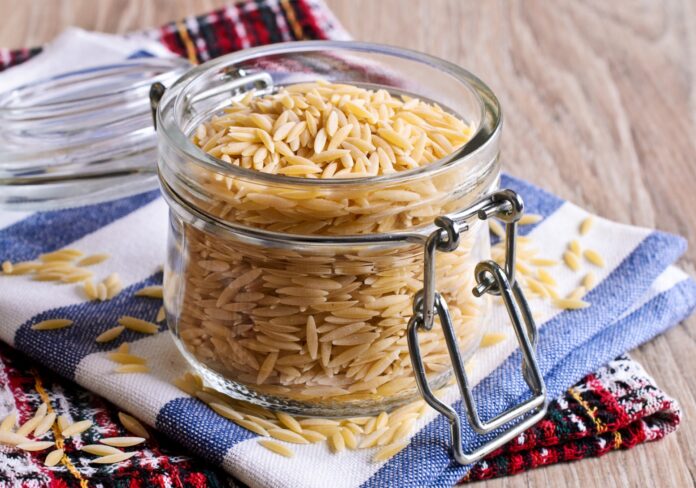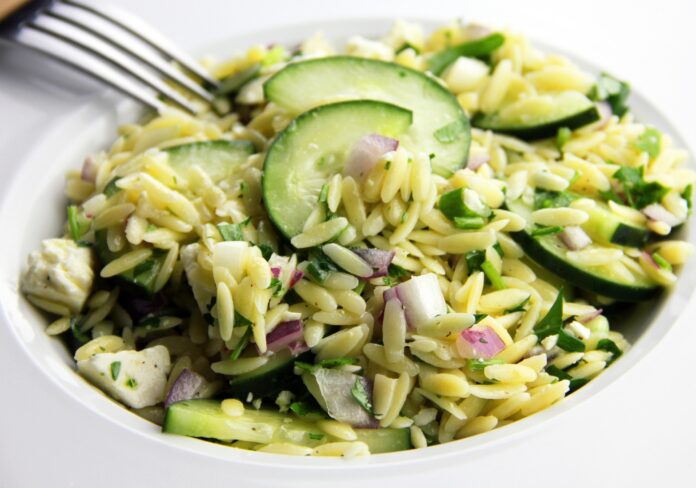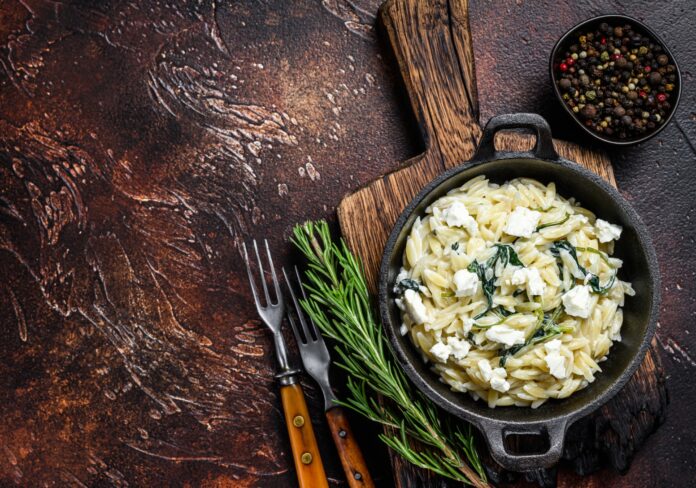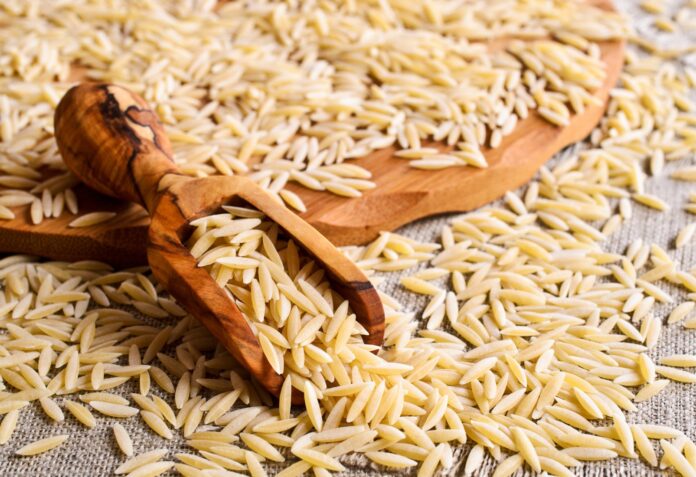Orzo is a type of durum wheat semolina pasta, which resembles a rice grain, but flatter and with thinner ends.
It has become very popular in recent years because of the delicacies many cooks have masterly prepared with it. Its fame has spread from Italy to several Mediterranean countries, the Middle East and even to the American continent. There it has become an integral part of the cuisine of several countries.
In this post, you will discover its main features, benefits and culinary tips. You will also get references of recipes with this versatile ingredient.

Features of orzo
As mentioned, orzo is really a pasta made with 100% enriched durum semolina wheat.
On the market there are different qualities of orzo. Therefore, it is always recommended to look for the one made with hard wheat. Indeed, there is a special variety of hard wheat for this type of pasta, since orzo made with soft wheat will disintegrate when cooked.
Due to its shape and size, it is used in any recipe replacing rice, quinoa or other pastas, so it can be used in soups, salads, risotto-like dishes and more. Sometimes it replaces rice in dishes where its starch is not necessary, such as rice pilaf.
Nowadays, there are also colored orzo varieties available on the market. These are, as we already know, pasta made with vegetables such as spinach, carrots, beets, tomatoes, etc.
How to cook orzo
It is very easy to prepare this pasta. All you need to do is to bring to boil 2 cups of water and 1 cup of orzo, add salt and orzo. In just 10 minutes this versatile pasta is ready.
Orzo can be served as a main dish with just tomato sauce or as a side dish of a full meal. People in the Mediterranean countries, where orzo is quite a popular staple, use to eat it combined with steamed vegetables, lentils, red onions, and usually with shredded chicken or beef meat.

Nutrition values and health benefits
Concerning its nutritional properties, orzo provides the body with enough amounts of essential nutrients. One cup of cooked orzo supplies:
- Approximately 175 calories.
- 6 grams of protein.
- 35 grams of carbohydrates.
Plus, it also contains protein, fiber, B vitamins, iron, zinc, and other essential minerals. And it provides you with valuable health benefits as well, like:
Ideal for intestinal cleansing
The fiber it contains is excellent to keep intestines clean and healthy, facilitating intestinal transit and preventing constipation. In addition, the fiber of orzo has a satiating effect, which is ideal for people who are under a strict diet regime to lose weight.

Promotes heart health
Orzo is composed of a set of vitamins mainly from the B complex. The presence of vitamin B1 and niacin is responsible for reducing LDL cholesterol levels in the blood.
Furthermore, consuming orzo prevents the formation of atherosclerotic plaques and reduces the risk of heart attacks, since it is low in fat, sodium, and cholesterol.
Decreases the risk of gallstone formation
This benefit is derived from the presence of insoluble fibers found in the orzo grains. These reduce the secretion of bile acids, responsible for the formation of gallstones in the gallbladder.
Gives a good feeling of satiety
Last, but not least, this staple helps to satiate the appetite, without causing that uncomfortable feeling of fullness. Orzo can be eaten with the ease of rice and, if the dish has been well prepared, leaves the diner satisfied with a delicious flavor.

How can we consume orzo?
Orzo is an excellent substitute for the traditional carbohydrates in the dish, so it can perfectly replace rice and create your own recipes such as orzotto. Another way to include it in our meals is in cold salads, grilled vegetables and stir-fries. It is also an essential ingredient in the preparation of soups and stews.
Tips
Some useful tips to get the best from orzo pasta are:
- One of the ways to prepare orzo that is simple and very tasty, ideal to serve as an accompaniment, is to cook the pasta, add a little butter or olive oil and finish with a little grated Parmesan or blue cheese.
- It is also an appropriate pasta to make fillings, as it absorbs very well the flavors of the ingredients with which it is cooked.
- Also delicious, healthy and nutritious peppers or tomatoes stuffed with orzo can be made.
- You can find orzo pasta in large supermarkets and multicultural food stores.
- Although since it is not a traditional ingredient of our gastronomy, in some stores they can give it a little more value by raising the price.

Recipes you can make with orzo
In the following link ( riceselect.com/product/orzo ) you will find more details about this extraordinary ingredient suitable for many culinary ideas, as well as interesting facts about its cooking. In addition, several recipes are offered so that you can prepare them and enjoy them together with your loved ones.
Some of these recipes are:
- Orzo stuffed Zucchini boats.
- Orzo stuffed bell peppers.
- Orzo with peas.
- Lemon chicken orzo soup.
- Pilaf, risotto or any other rice-based dish can be indeed made with orzo.
- Any pasta-based meal, like spaghetti or other long noodles can also be made with orzo.
- Various salads, like Mediterranean Orzo salad or Greek Orzo salad.
Final advice for celiacs
As you may have already read, orzo is made from wheat semolina flour, which contains gluten. This means it is not gluten-free. Individuals with celiac disease or gluten intolerance should avoid consuming orzo or any other food made from wheat, barley, or rye. Instead, they should look for gluten-free alternatives made from grains such as rice, quinoa, or corn.
Fortunately, there are many gluten-free pasta options available in stores and online, including those made from gluten-free grains or legumes such as chickpeas or lentils. It’s important for people who suffer from celiac disease or gluten intolerance to read food labels carefully and check for any potential sources of gluten in the ingredients list.









